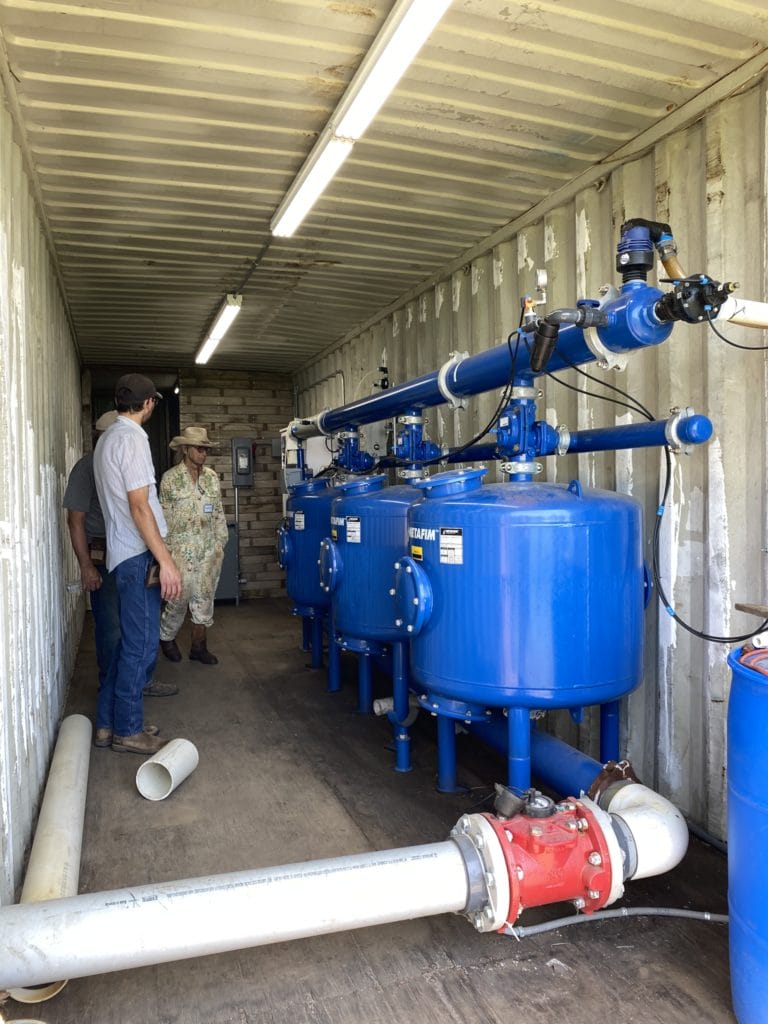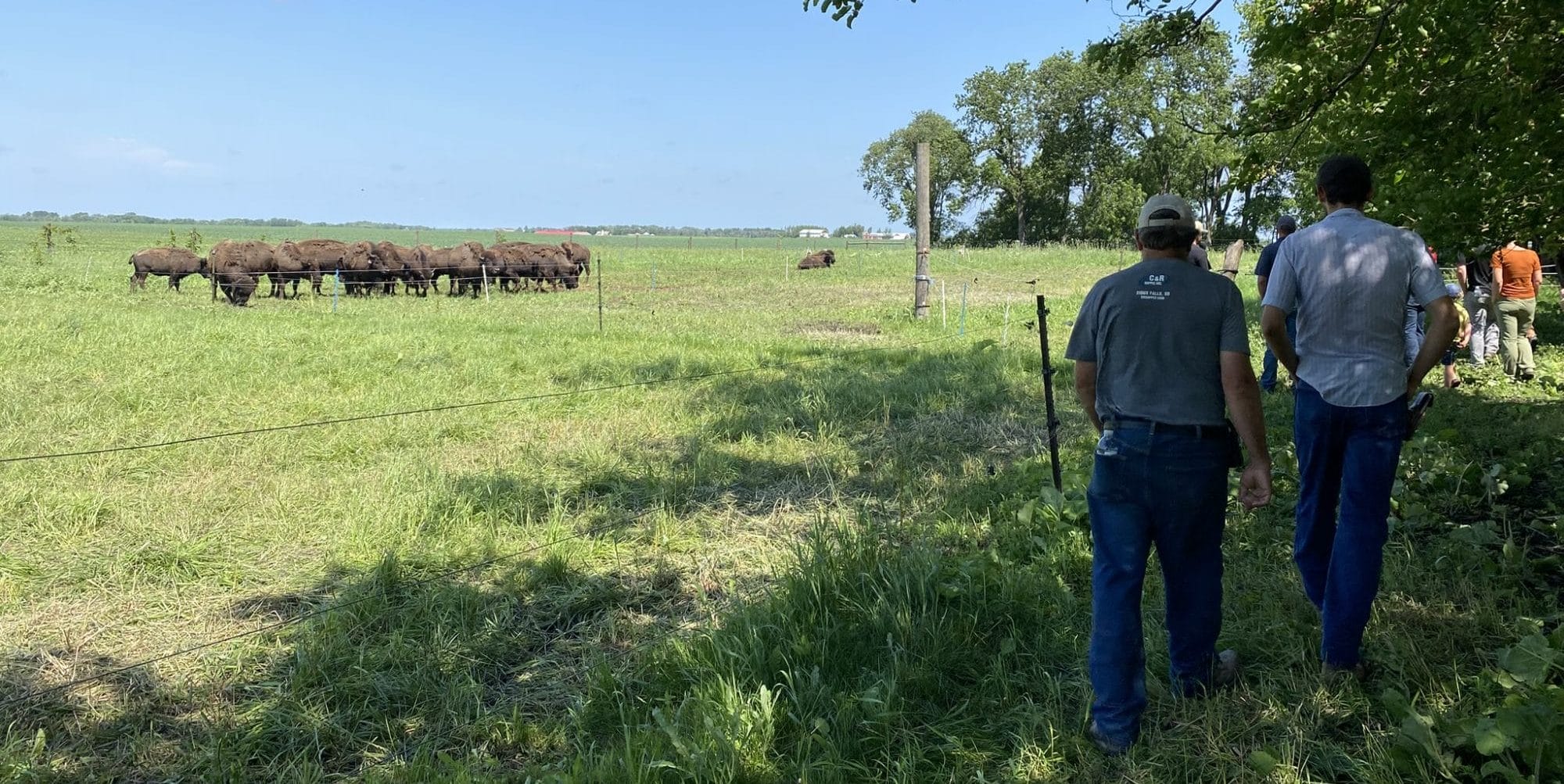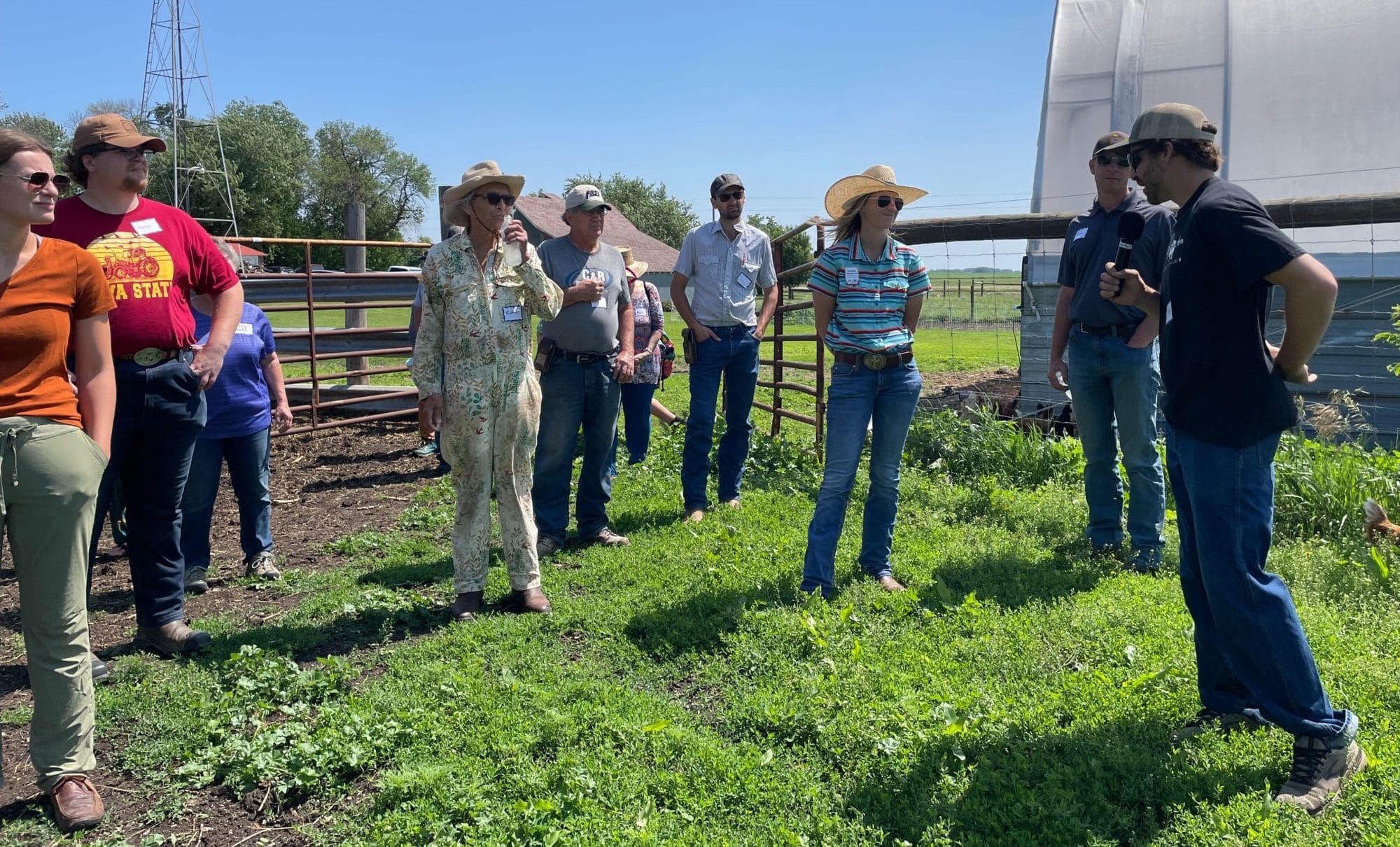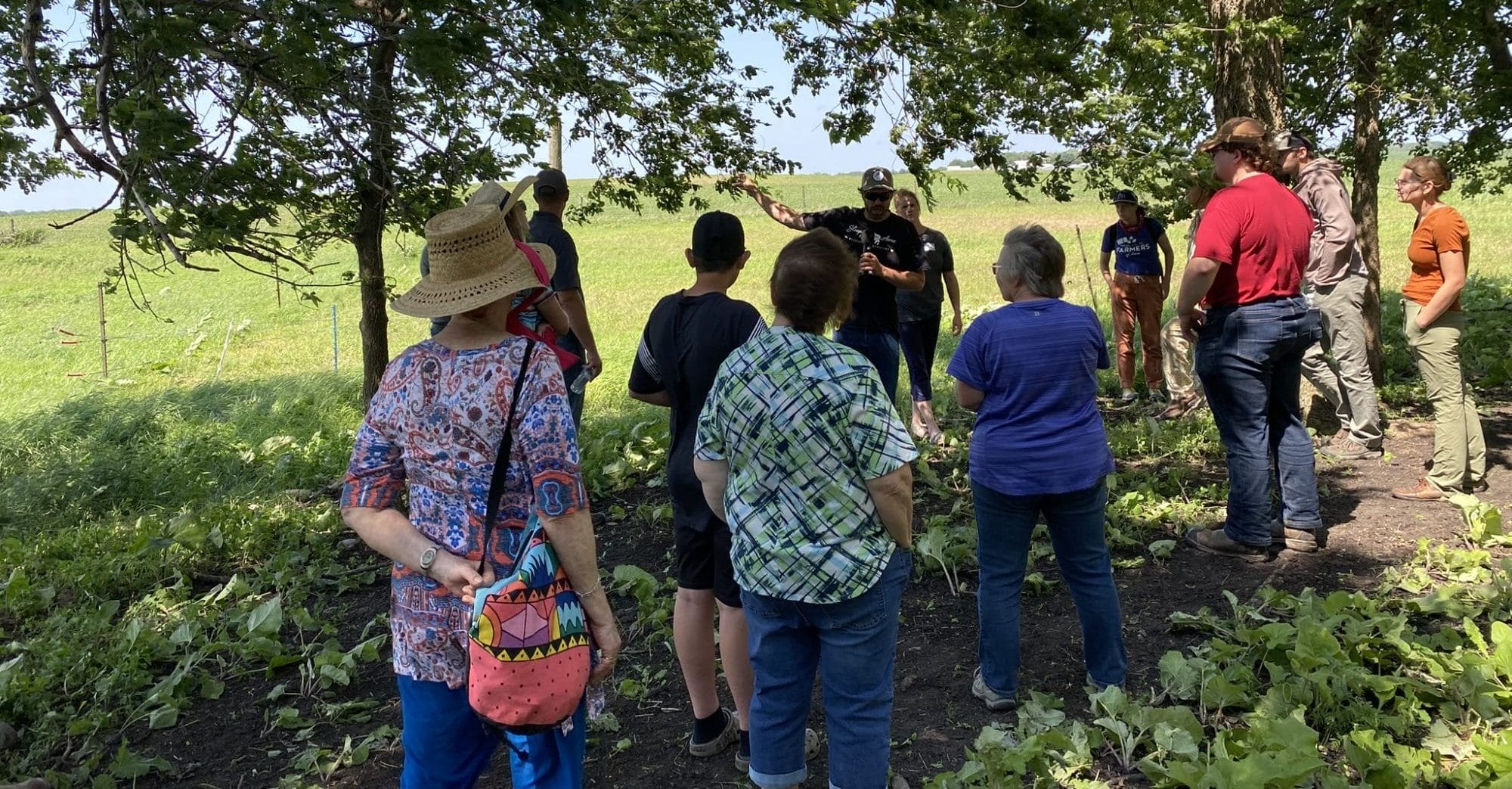Sleepy Bison Acres Field Day: Grazing Bison and Conserving Water
Craig and Elizabeth Fischer own and operate Sleepy Bison Acres in Sleepy Eye, Minnesota. They hosted a field day in June with Practical Farmers of Iowa and Pheasants Forever.
The farm sits on land once owned by Craig’s great grandfather. Only 12 of the original 200 acres of the homestead remain, the rest having been sold during the farm crisis of the 1980s, but those remaining acres have been optimized for maximum efficiency in managing their mixed-age bison herd, pastured pigs and free-range egg layers.
Craig’s herd has grown substantially over the years, and he now rents neighboring land to graze, keeping only about 35 head of bison on the original land at any given time. Since the farm crisis, an additional 87-acre parcel has also been added down the road for row crops, primarily a rotation of corn and soybeans. Craig and Elizabeth have learned to focus less on expansion and more on maximizing what they have for their herd and crops. As Craig explains, “The more you work with nature, the easier it gets. The more you fight against it, the harder it becomes.”
Regenerative and Adaptive Grazing Practices
This focus on ecological health is the driver behind all the decisions made on the farm. The role the bison play is critical to maintaining the health of the farm. Unlike cattle, bison are natural movers, constantly disturbing the soil. They are always grazing, trampling the vegetation around them before moving on. This behavior creates diverse plant communities and healthier soils.
In his introduction to the bison during the field day, Craig referenced a study led by Kansas State University comparing bison, cattle and conservation ground. The study illustrated that after 30 years, bison-grazed land showed the greatest diversity of plants and wildlife, highlighting the importance of these animals when it comes to establishing and maintaining prairie health. By rotating animals frequently through small paddocks, they mimic natural herd patterns. This gives forage more time to recover and reduces the need for expensive feed hay.
The Fischers use a high-stock-density approach to their rotational grazing practices, typically concentrating animals at 140,000−155,000 pounds per acre, often for just a couple of hours before moving the herd along to the next paddock. This results in trampling that lays down grass, feeds soil microbes and preserves moisture in the soil. “Every mouth isn’t just what they eat,” Craig explained. “It’s also what they step on and impact.”
Drip Irrigation to Conserve Water and Nutrients
Another highlight of the field day was a visit to the Fischer’s 87-acre corn field where they have installed an underground drip irrigation system.

Craig says that using an underground irrigation system is more work up front, but drastically saves on water usage in the long-term.
Unlike overhead irrigation, which loses water to evaporation, subterranean drip lines deliver the water directly to the roots of the corn. Buried 12 inches below the soil, the system reduces weed pressure, prevents nutrient leaching and conserves water, all highly critical considerations in a farming area that draws heavily from the Mount Simon-Hinckley aquifer.
The Fischer’s use the system to apply nutrients like nitrogen directly through the drip lines and instead of front loading all the nitrogen at once, they can apply smaller amounts throughout the growing season, reducing waste and nitrogen runoff, as well as saving money. This system does require more labor and vigilance, especially with gophers threatening underground infrastructure, but it is highly effective in conserving and maintaining healthy water sources, making the trade-offs worthwhile.
While Craig admits that no system is perfect and underground drip irrigation won’t solve every challenge facing water quality today, it is one of many important tools for sustainable farming, especially in drought years. “If everyone had drip irrigation like this field does, some of the biggest problems with our water usage and quality could be solved.”
Restoring Resilience
The field day at Sleepy Bison Acres highlighted two principles of regenerative agriculture: thoughtful grazing and efficient water use. By managing bison as the keystone species and letting them utilize their natural herd dynamics, the Fischer’s are rebuilding soil health and restoring prairie plant diversity. By investing in underground drip irrigation, they are conserving water while applying precision water needs to crops.
All these practices taken together can enhance, rather than deplete, the natural resources of any farming or grazing operation. When combined with conservation programs like CRP, they create a framework to build resilient farms and healthier ecosystems.
Additional Resources
Want more information on below ground irrigation or grazing for habitat health? Check out these resources:



